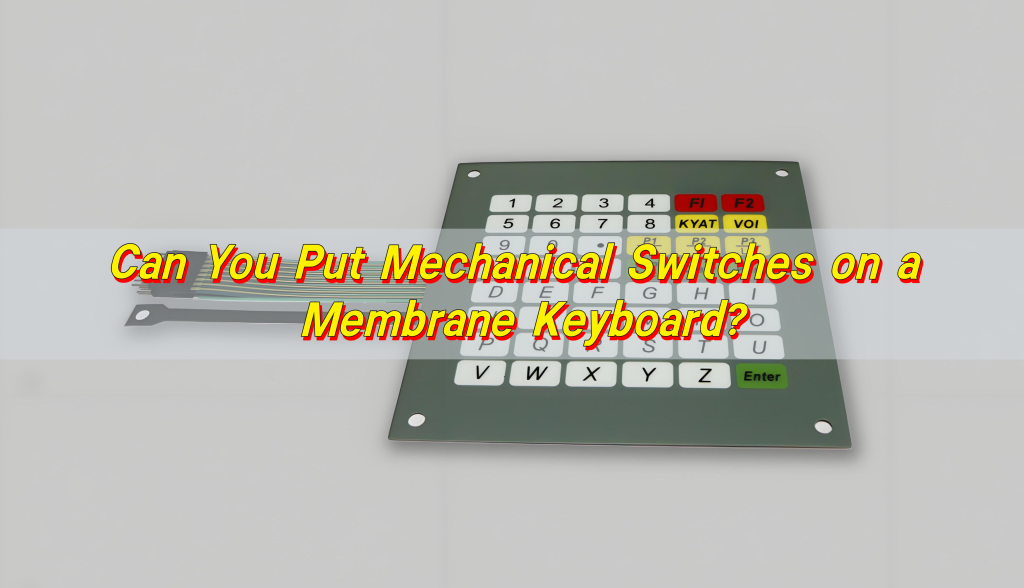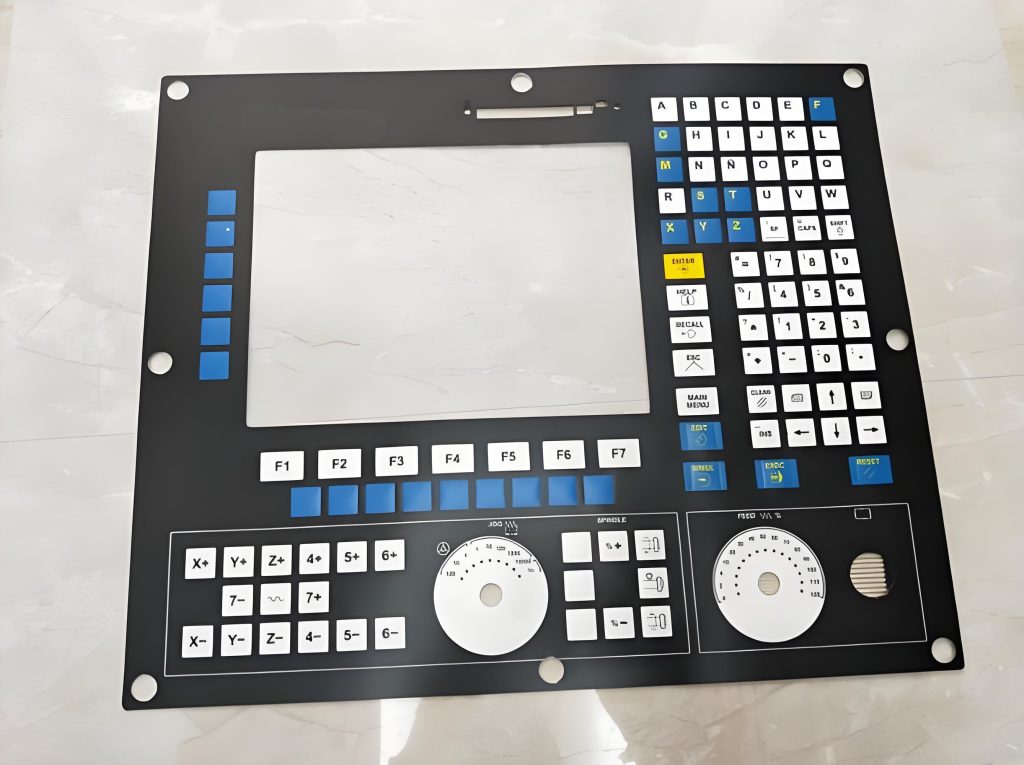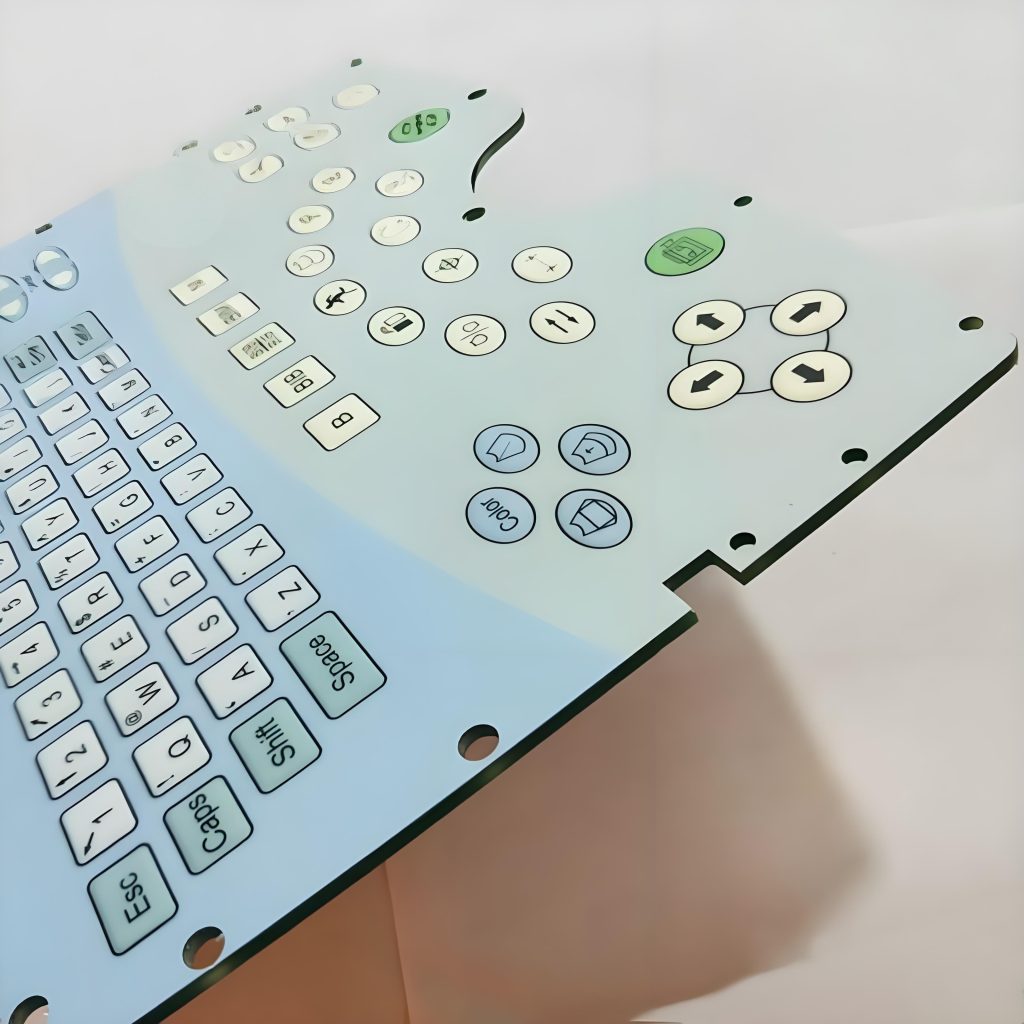
Can You Put Mechanical Switches on a Membrane Keyboard?
Can You Put Mechanical Switches on a Membrane Keyboard?
No, you can’t. Mechanical switches and membrane keyboards use completely different structures. Membrane boards rely on pressure pads, while mechanical ones use physical switch mechanisms. They’re not compatible. But there are still ways to improve the feel and sound of a membrane keyboard without full mechanical parts.

What are membrane switches keyboard?
Membrane switch keyboards use pressure-sensitive layers to register a keypress. Instead of a separate switch under every key, there’s a flexible membrane with printed circuitry. When you press a key, it pushes down through a rubber dome or spacer to complete the circuit and send the signal.
There’s no individual spring or mechanical action inside. It’s all flat, quiet, and compact. The design is simple but effective, especially for cost-saving and water-resistant purposes. Many offices, schools, and laptops rely on this kind of keyboard because it’s lightweight and budget-friendly.
However, because of the soft rubber dome layer beneath the keys, the feedback is muted. There’s often no clear tactile response when a key actuates. Yet, for those who prefer silent, low-maintenance options, membrane keyboards still shine.
Can you put switches in a membrane keyboard?
The short answer is no. Membrane keyboards have no space, socket, or electrical infrastructure to support individual mechanical switches. Mechanical keyboards use switch housings, metal contacts, and springs, all of which require separate mounting and solder points.
Membrane keyboards rely on pressure pads pressed between two flexible circuit sheets. There’s simply nowhere to anchor a mechanical switch.
But for everyday users, the time, tools, and skill required aren’t practical. So rather than attempting an impossible modification, it’s better to focus on making your existing keyboard feel more satisfying.
Are membrane switches quiet?
Yes, membrane keyboards are known for being extremely quiet. Because they don’t have metal components or separate moving parts inside each key, they don’t produce loud clicks or rattling sounds. The rubber or silicone domes underneath each key absorb much of the noise. This makes them perfect for environments where silence matters—like classrooms, offices, or libraries.

If you’re someone who enjoys quiet focus or works in a shared space, membrane switches are ideal. They give you the function you need without the attention-grabbing noise that mechanical keyboards often bring.
How to make a membrane keyboard sound better?
While membrane keyboards are naturally quiet, they can sometimes sound hollow or plasticky. There are a few easy ways to improve that sound.
Start with the keycaps. Replacing thin, cheap plastic caps with thicker, higher-quality ones helps dampen sound. It also gives each key a more solid feel.
You can also open the keyboard and insert thin foam layers between the PCB and bottom casing. This dampens vibration, softens the sound, and reduces plastic echo.
These are all low-cost, DIY-friendly upgrades that don’t require any mechanical conversion. With a few simple changes, you can transform the sound of your keyboard without replacing the entire device.
How to make a membrane keyboard clicky?
Start with clicky keycaps. Some third-party keycap sets include a plastic clicker mechanism that mimics the feel of a switch.
Another option is tactile stickers or pads. These are tiny layers you place under each key to add resistance and feedback. It’s not as crisp as a true click, but the added resistance gives you more control and satisfaction with each press.
You can also explore replacing the rubber domes inside the keyboard. Some models allow you to switch out standard domes for stiffer or more tactile ones. These upgrades are subtle, but they change the typing experience dramatically.

All of these methods are far easier and cheaper than trying to install mechanical switches.
What are the cons of a membrane keyboard?
While membrane keyboards offer many benefits—like quiet operation, low cost, and water resistance—they do have some limitations.
First is the feel. Many users find membrane keyboards too soft or mushy. The lack of tactile response makes it harder to know when a key has registered.
Durability is another concern. Membrane keyboards generally last between 5 to 10 million keystrokes per key. That sounds like a lot, but it’s a fraction of the lifespan of most mechanical switches.
Repairs and customization are also limited. If a key stops working, there’s not much you can do. You can’t easily remove or replace individual keys, and soldering repairs are often not possible.
Still, for casual users or those on a tight budget, these downsides don’t outweigh the strengths.
What is the life expectancy of a membrane keyboard?
Membrane keyboards usually last around 3 to 5 years, depending on how often and how hard you type. The average key is rated for up to 10 million presses. While that’s less than mechanical switches, it’s still plenty for moderate use.
Proper care helps extend it. Keeping your keyboard clean, avoiding spills, and not pressing too hard can all make a difference. But eventually, the rubber domes wear down. When that happens, keys may stop registering, feel sticky, or become unresponsive.
Do mechanical switches last longer than membranes?
Yes, mechanical switches are built for endurance. Most are rated for 50 to 100 million keystrokes per key. That’s five to ten times longer than a typical membrane keyboard.
The reason is simple. Mechanical switches use solid components—metal contacts, springs, and housings. They’re made to withstand constant pressure and impact. They also maintain their feel longer, without becoming mushy or weak over time.

Membrane switches, on the other hand, rely on rubber or silicone domes that lose tension with age. Their performance drops gradually, and there’s no easy way to repair or replace worn domes.
Conclusion:
If you’re looking for tactile upgrades like dome replacements, we can help. At Yu An Electronics, we provide precision-engineered metal domes, tactile domes, and dome arrays that can dramatically enhance your keyboard’s performance and feel.
Contact us today at sales@best-membraneswitch.com to discuss your project or ask for a sample.

Top Membrane Switches for Home Electronics Projects in 2025
You can elevate your home electronic membrane switch project in 2025 with standout models such as the 4×4 Matrix 12 Keys Keypad from SOUSHINE, the rgb-enabled strip switches from Molex, and custom graphic switches by Panasonic. These switches offer slim profiles and reliable performance, making them easy to integrate into your DIY setup. You gain ...

Top tips for fixing PS4 controller conductive film keypads
Are you frustrated because your PS4 controller buttons have stopped working? You are not alone. Many gamers experience issues with the conductive film keypad for ps4. Button failures often happen because of dirt, debris, or rough handling. Take a look at the most common causes: Cause Description Dirt and debris Accumulation in button crevices can ...

Top Membrane Switch Companies Leading the Industry in 2025
You see a dynamic market shaping the future of membrane switch technology. Leading companies like Molex, SOUSHINE, YU AN Electronics, TE Connectivity, Honeywell, Omron, Mitsubishi Electric, Panasonic, Industrial Print Technologies, SCHURTER, XYMOX, Douglas Corp, Dyna-Graphics, ELO Touchscreens, UTC, LUNFENG Technology, and Fujikura drive growth with innovation and global reach. Choosing the right membrane switch company ...
Contact us online